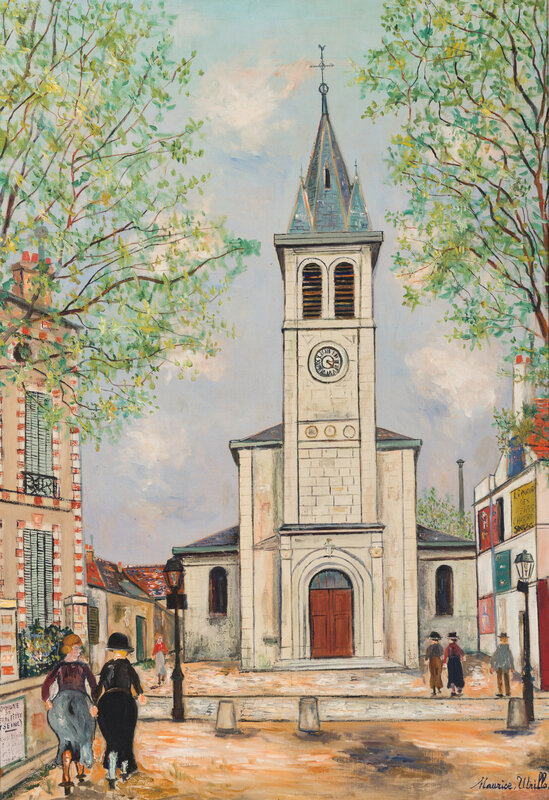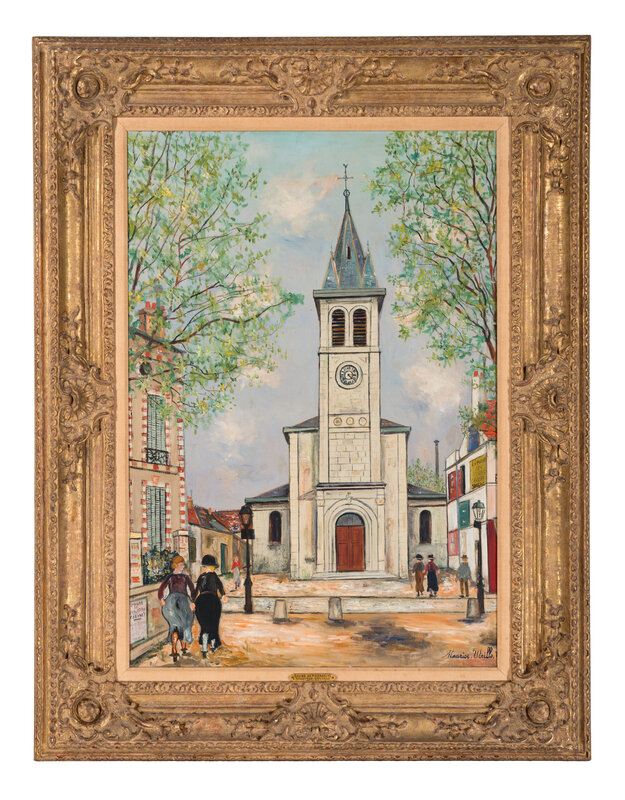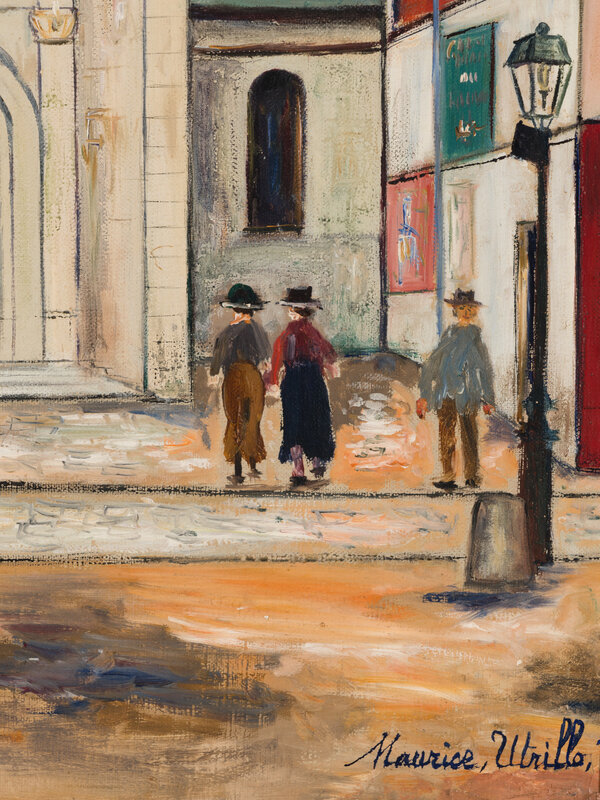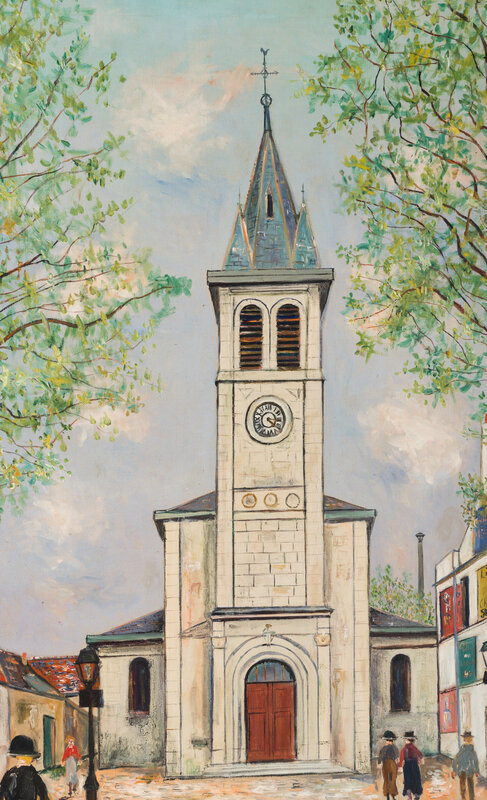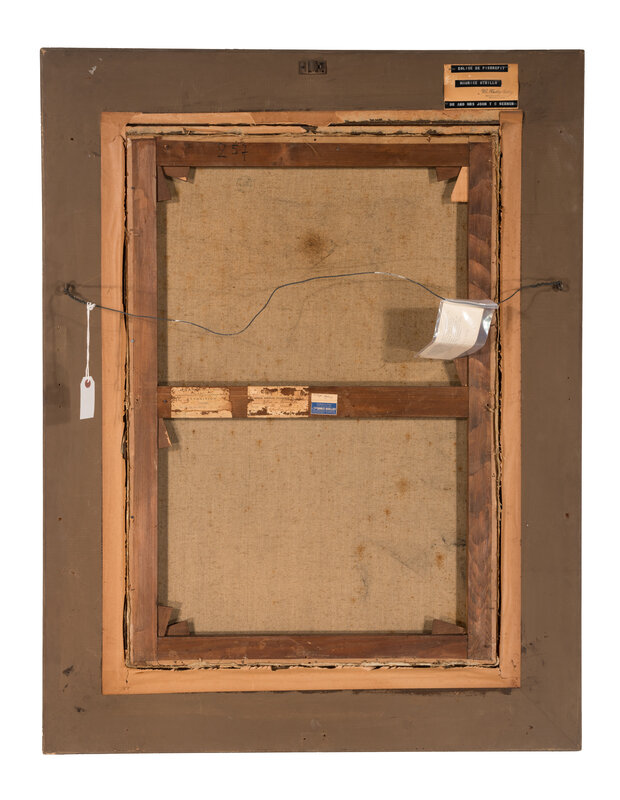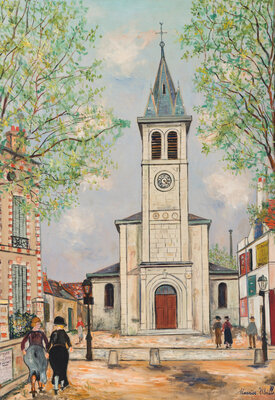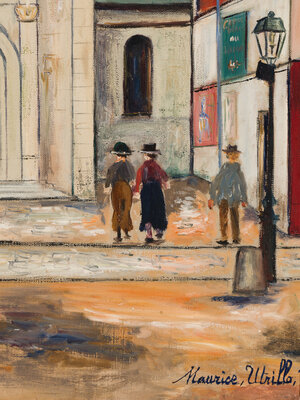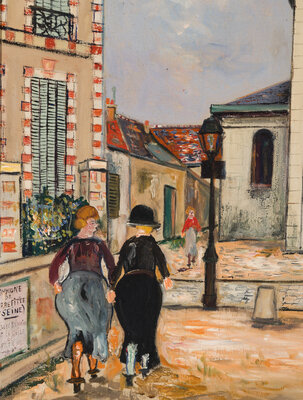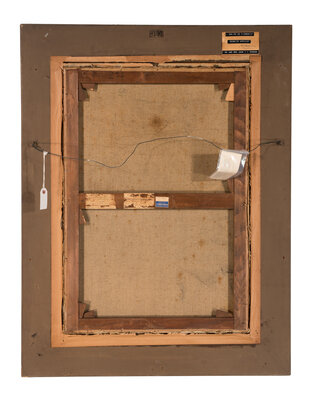Maurice Utrillo
(French, 1883–1955)
Église de Pierrefitte, 1927
Sale 2087 - Impressionist and Modern Art, Featuring the Collection of John and Rosetta Gernon
Oct 28, 2024
12:00PM ET
Live / Philadelphia
Own a similar item?
Estimate
$50,000 -
80,000
Price Realized
$63,500
Sold prices are inclusive of Buyer’s Premium
Lot Description
Maurice Utrillo
(French, 1883–1955)
Église de Pierrefitte, 1927
Oil on canvas
Signed Maurice Utrillo, V. (lower right)
35 1/2 x 24 3/4 in. (90.2 x 62.9cm)
This lot is located in Philadelphia.
Property from the Estate of Dr. John Talbot Gernon and Mrs. Rosetta Place Gernon.
We wish to thank l'Association Maurice Utrillo for their kind assistance in cataloguing the present work.
Please note this work will be on view at our New York City office, at 32 E. 67th Street, from October 24th to October 26th (included), 9am-5pm.
Provenance:
Valerie Bernheim Jeune, Paris.
William Findlay Gallery, Chicago, Illinois.
Acquired directly from the above by the present owner.
Literature:
Paul Pétridès, L'Œuvre Complet de Maurice Utrillo, Vol. VI, Paul Pétridès Éditeur, Paris, 1966, no. 1177 (illustrated p. 483).
Lot Essay:
Born in Paris and raised in Montmartre, Maurice Utrillo received no formal artistic training but was strongly encouraged by his mother, the famed artist Suzanne Valadon, to paint as a form of therapy.
Église de Pierrefitte marks an important shift in Utrillo's career as it shows how the artist started adding color to his paintings, following his so-called "White Period" from the early 1900s. As in many other compositions, the present work depicts a church, likely executed en plein air (rather than after a postcard) as the artist lived in Pierrefitte at the time. Rebuilt in the 1850s, l'église Saint-Gervais-Saint-Protais is located in the north of Paris, and was only depicted by Utrillo this one time. Today, it stands on the official path of the Camino de Santiago.
With its imposing bell tower which dwarfs the surrounding street and villagers, the church makes architecture the painting's main subject, thus revealing the artist's interest in form and shape. Rendered in a blend of light creams and off-whites, the church offers a neutral offset to the surrounding colors, which frame the composition nicely and give it its equilibrium. In La Vie Passionnée de Maurice Utrillo, a fictionalized retelling of the artist's life, author Claude Francolin makes the artist say he liked to paint churches because they were clean. As such, it is as if Utrillo conceived the churches he painted as a solid, stable element around which color, and life, spiraled. Maurice de Vlaminck, an admirer of Utrillo’s work, described the importance of this subject: “One must give an important place in Utrillo’s work to his cathedrals and churches. The most spectacular paintings are perhaps certain cathedrals which contain a true mystic power. Whether Utrillo paints the imposing bulk of the cathedral or the pointed spire of the village chapel, he unconsciously expresses the love that man feels towards his Creator."
Possibly recognizing Utrillo's service to the country, at a time when more churches were being built following WWI's atrocities and bombings, the French government awarded him La Croix de la Légion d'Honneur in 1928, a year after the present work was executed.
Condition Report
Auction Specialist
